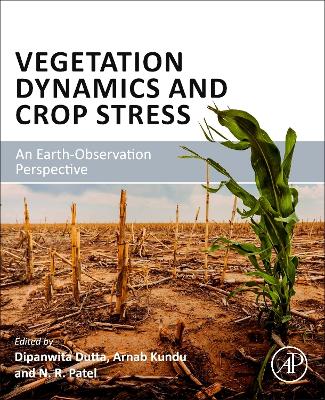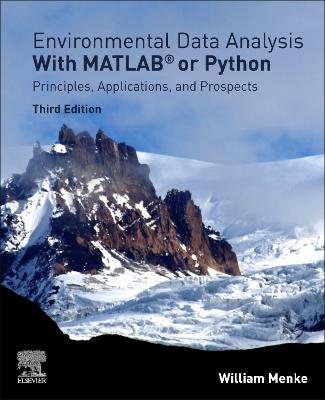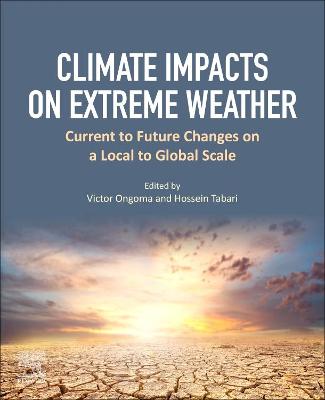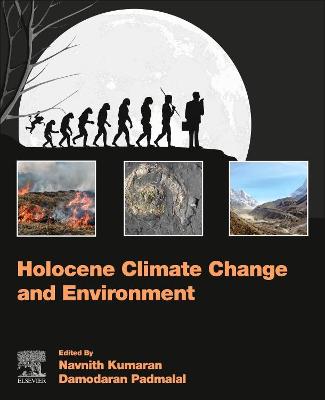Water, Land, and Forest Susceptibility and Sustainability
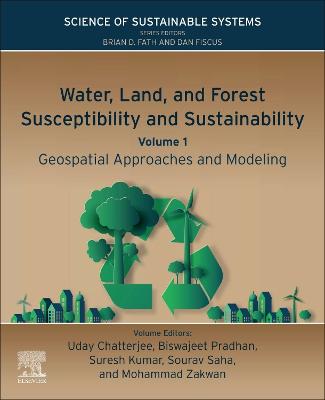 -10%
portes grátis
-10%
portes grátis
Water, Land, and Forest Susceptibility and Sustainability
Geospatial Approaches and Modeling
Kailasa, Suresh Kumar; Saha, Sourav; Pradhan, Biswajeet; Chatterjee, Uday; Zakwan, Mohammad
Elsevier - Health Sciences Division
11/2022
576
Mole
Inglês
9780323918800
15 a 20 dias
450
Descrição não disponível.
Section I: Introduction: Theoretical framework and approach of sustainability Theoretical framework and approaches of susceptibility and drivers for susceptibility and sustainability Natural Resource Sustainability and Ecosystem Services- A Paradigm shift
Section II: Water Resource Susceptibility and sustainability River basin / catchment susceptibility and sustainability Flood susceptibility and management- Case study Water pollution susceptibility and remediation Water scarcity susceptibility, regional disparity and sustainability Ground Water susceptibility and sustainability Surface water susceptibility estimation and sustainable measure
Section III: Land Resources susceptibility and sustainability Soil erosion susceptibility and sustainability Land degradation susceptibility and sustainability Waste land susceptibility and sustainability Wet land susceptibility and sustainability Urban land-use susceptibility and sustainability- Case study Land use susceptibility and sustainability Land slide susceptibility in hilly areas and sustainability Land degradation susceptibility and sustainability in riverine areas Land degradation susceptibility and sustainability in coastal areas- Case study Sustainability of Soil Ecosystem Services
Section IV: Forest Resource Susceptibility and sustainability Forest degradation susceptibility and sustainability Forest fire susceptibility and sustainability- Case study Forest ecology imbalance susceptibility and sustainability Forest health susceptibility and sustainability in urban area Forest and livelihood susceptibility and sustainability Sustainability of Forest and Ecosystem Services
Section V Conclusion Conclusion
Section II: Water Resource Susceptibility and sustainability River basin / catchment susceptibility and sustainability Flood susceptibility and management- Case study Water pollution susceptibility and remediation Water scarcity susceptibility, regional disparity and sustainability Ground Water susceptibility and sustainability Surface water susceptibility estimation and sustainable measure
Section III: Land Resources susceptibility and sustainability Soil erosion susceptibility and sustainability Land degradation susceptibility and sustainability Waste land susceptibility and sustainability Wet land susceptibility and sustainability Urban land-use susceptibility and sustainability- Case study Land use susceptibility and sustainability Land slide susceptibility in hilly areas and sustainability Land degradation susceptibility and sustainability in riverine areas Land degradation susceptibility and sustainability in coastal areas- Case study Sustainability of Soil Ecosystem Services
Section IV: Forest Resource Susceptibility and sustainability Forest degradation susceptibility and sustainability Forest fire susceptibility and sustainability- Case study Forest ecology imbalance susceptibility and sustainability Forest health susceptibility and sustainability in urban area Forest and livelihood susceptibility and sustainability Sustainability of Forest and Ecosystem Services
Section V Conclusion Conclusion
Este título pertence ao(s) assunto(s) indicados(s). Para ver outros títulos clique no assunto desejado.
Agricultural science; Agricultural soil science; Agronomy discipline; Agronomy; AHP; Alipurduar; Analytical hierarchy process; Annual rainfall variability; Applied geology; Aquatic ecosystem; Aquatic pollution; Aquatic science; Artificial neural networks.Biomass; Atmospheric physics; Atmospheric science; Bayesian network; Biogeography; Biological sciences; C factor; Canopy; Chlorophyll index; Climate Change; Climate change; Climatechange; Conservation practices; Conservation; Corrosion; COVID19Environmental Analysis; Daily precipitation; Decicion-making; Decision support system; DEMATEL; Detection; Earth sciences; Ecological application; Ecological modeling; Ecology; Ecosystem ecology; Ecosystem processes; Ecosystem services; Empirical methods; Energy resource; Energy types; Environmental analysis; Environmental assessment; Environmental Assessment; Environmental chemical engineering; Environmental geography; Environmental issues of natural resources; Environmental management tool; Environmental management; Environmental monitoring; Environmental pollution; Environmental Pollution; Environmental protection; Environmental quality; Environmental Quality; Environmental science; Environmental Science; Environmental social issue; Evolutionary biology; Evolutionary computation; FCD; Flood risk index (FHI)Flooding; Forest dynamics; Forest fire susceptibility; Forest health; Forest; Forestry; Generalized linear model; Geochemistry; Geographical information system; Geography; Geology; Geomatics; Geophysics; Geospatial technology; Geotechnical engineering; GIS; Global change; Groundwater; Gullied land; Gully erosion; HGM Mapping; Human habitat; Hydrology; India; Industrialization; Infilterationrate; ISO; Isoerosivity; K factor; Kinetic energy; Kolkata city; Land alteration; Land and water resources; Land degradation; Land resources; Land surface emissivity; Land surface temperature (LST)Pathar Patima Block; Land surface temperature; Land use and land cover; Landsat; Landslide susceptibility; LISS 3Remote sensing; Long term trends; Longitudinal dispersion coefficient; LS factor; Machine learning; Management; MCDA method.Natural resource management; Method in earth sciences; Morocco; Multispectral data; Natural resource management; Natural resources; NDVI; Normalize coastal aerosol index; Oceanography; Operations management; Orographic rains; Pamba river basin; Pedology; Petroleum engineering; Petroleum geology; Plant architecture; Plant biology; Polluted water; Proportion vegetation condition; Purulia district; Quantitative evaluation; R factor; Rainfall erosivity; Rainfall variability; Recharge; Remediation; Remote sensing and GIS; Remote sensing; Reservoir sedimentation; Risk analysis in toxicology; RUSLE; Seasonal rainfall variability; Sentinel 2Vegetation and water availability; Soil science; Soil subject classification; Solid mechanics; Spatial ecology; Spatial risk; Spatio-temporal analysis; Statistical applications; Structural engineering; Supervised classification; Support practices; surface runoff; Susceptibility; Suspended sediment concentration; Sustainability engineering; Sustainability; Sustainable development; Synthetic-aperture radar; TaguenitWadi; Terrestrial science; Terrestrial Science; Trap efficiency; Urban forests; Urban geography; Urban growth; Urban planning; USLE; Vegetation degradation; Visual MODFLOW; Vulnerability; Wastelands; Water erosion; Water management; Water Management; Water pollution index; Water pollution; Water quality modeling; Water treatment; Watershed; Weighted Overlay Analysis; Western ghats; Wetland health
Section I: Introduction: Theoretical framework and approach of sustainability Theoretical framework and approaches of susceptibility and drivers for susceptibility and sustainability Natural Resource Sustainability and Ecosystem Services- A Paradigm shift
Section II: Water Resource Susceptibility and sustainability River basin / catchment susceptibility and sustainability Flood susceptibility and management- Case study Water pollution susceptibility and remediation Water scarcity susceptibility, regional disparity and sustainability Ground Water susceptibility and sustainability Surface water susceptibility estimation and sustainable measure
Section III: Land Resources susceptibility and sustainability Soil erosion susceptibility and sustainability Land degradation susceptibility and sustainability Waste land susceptibility and sustainability Wet land susceptibility and sustainability Urban land-use susceptibility and sustainability- Case study Land use susceptibility and sustainability Land slide susceptibility in hilly areas and sustainability Land degradation susceptibility and sustainability in riverine areas Land degradation susceptibility and sustainability in coastal areas- Case study Sustainability of Soil Ecosystem Services
Section IV: Forest Resource Susceptibility and sustainability Forest degradation susceptibility and sustainability Forest fire susceptibility and sustainability- Case study Forest ecology imbalance susceptibility and sustainability Forest health susceptibility and sustainability in urban area Forest and livelihood susceptibility and sustainability Sustainability of Forest and Ecosystem Services
Section V Conclusion Conclusion
Section II: Water Resource Susceptibility and sustainability River basin / catchment susceptibility and sustainability Flood susceptibility and management- Case study Water pollution susceptibility and remediation Water scarcity susceptibility, regional disparity and sustainability Ground Water susceptibility and sustainability Surface water susceptibility estimation and sustainable measure
Section III: Land Resources susceptibility and sustainability Soil erosion susceptibility and sustainability Land degradation susceptibility and sustainability Waste land susceptibility and sustainability Wet land susceptibility and sustainability Urban land-use susceptibility and sustainability- Case study Land use susceptibility and sustainability Land slide susceptibility in hilly areas and sustainability Land degradation susceptibility and sustainability in riverine areas Land degradation susceptibility and sustainability in coastal areas- Case study Sustainability of Soil Ecosystem Services
Section IV: Forest Resource Susceptibility and sustainability Forest degradation susceptibility and sustainability Forest fire susceptibility and sustainability- Case study Forest ecology imbalance susceptibility and sustainability Forest health susceptibility and sustainability in urban area Forest and livelihood susceptibility and sustainability Sustainability of Forest and Ecosystem Services
Section V Conclusion Conclusion
Este título pertence ao(s) assunto(s) indicados(s). Para ver outros títulos clique no assunto desejado.
Agricultural science; Agricultural soil science; Agronomy discipline; Agronomy; AHP; Alipurduar; Analytical hierarchy process; Annual rainfall variability; Applied geology; Aquatic ecosystem; Aquatic pollution; Aquatic science; Artificial neural networks.Biomass; Atmospheric physics; Atmospheric science; Bayesian network; Biogeography; Biological sciences; C factor; Canopy; Chlorophyll index; Climate Change; Climate change; Climatechange; Conservation practices; Conservation; Corrosion; COVID19Environmental Analysis; Daily precipitation; Decicion-making; Decision support system; DEMATEL; Detection; Earth sciences; Ecological application; Ecological modeling; Ecology; Ecosystem ecology; Ecosystem processes; Ecosystem services; Empirical methods; Energy resource; Energy types; Environmental analysis; Environmental assessment; Environmental Assessment; Environmental chemical engineering; Environmental geography; Environmental issues of natural resources; Environmental management tool; Environmental management; Environmental monitoring; Environmental pollution; Environmental Pollution; Environmental protection; Environmental quality; Environmental Quality; Environmental science; Environmental Science; Environmental social issue; Evolutionary biology; Evolutionary computation; FCD; Flood risk index (FHI)Flooding; Forest dynamics; Forest fire susceptibility; Forest health; Forest; Forestry; Generalized linear model; Geochemistry; Geographical information system; Geography; Geology; Geomatics; Geophysics; Geospatial technology; Geotechnical engineering; GIS; Global change; Groundwater; Gullied land; Gully erosion; HGM Mapping; Human habitat; Hydrology; India; Industrialization; Infilterationrate; ISO; Isoerosivity; K factor; Kinetic energy; Kolkata city; Land alteration; Land and water resources; Land degradation; Land resources; Land surface emissivity; Land surface temperature (LST)Pathar Patima Block; Land surface temperature; Land use and land cover; Landsat; Landslide susceptibility; LISS 3Remote sensing; Long term trends; Longitudinal dispersion coefficient; LS factor; Machine learning; Management; MCDA method.Natural resource management; Method in earth sciences; Morocco; Multispectral data; Natural resource management; Natural resources; NDVI; Normalize coastal aerosol index; Oceanography; Operations management; Orographic rains; Pamba river basin; Pedology; Petroleum engineering; Petroleum geology; Plant architecture; Plant biology; Polluted water; Proportion vegetation condition; Purulia district; Quantitative evaluation; R factor; Rainfall erosivity; Rainfall variability; Recharge; Remediation; Remote sensing and GIS; Remote sensing; Reservoir sedimentation; Risk analysis in toxicology; RUSLE; Seasonal rainfall variability; Sentinel 2Vegetation and water availability; Soil science; Soil subject classification; Solid mechanics; Spatial ecology; Spatial risk; Spatio-temporal analysis; Statistical applications; Structural engineering; Supervised classification; Support practices; surface runoff; Susceptibility; Suspended sediment concentration; Sustainability engineering; Sustainability; Sustainable development; Synthetic-aperture radar; TaguenitWadi; Terrestrial science; Terrestrial Science; Trap efficiency; Urban forests; Urban geography; Urban growth; Urban planning; USLE; Vegetation degradation; Visual MODFLOW; Vulnerability; Wastelands; Water erosion; Water management; Water Management; Water pollution index; Water pollution; Water quality modeling; Water treatment; Watershed; Weighted Overlay Analysis; Western ghats; Wetland health


